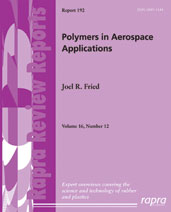2016-04-05
Power Demands for Curing Carbon Fiber Composites for Automotive Components 2016-01-0527
The power demands in terms of kilowatt-hour electrical use were compared for autoclave curing commercial thermosetting carbon fiber pre-pregs with an innovative alternative of high energy X-ray curing. An automotive component, now made with carbon fiber composites, was selected as an illustrative example, an Aston-Martin hood. Temperature resistant polyester molds for these hoods were used and manufacturer recommended autoclave curing conditions were followed. X-rays, which can penetrate about 15 cm (6 inches) in unit density materials (or less into higher density materials as molds), were used to cure pre-pregs made with a specialty matrix material using the same molds, but doing so without adding any heat for curing. High energy X-ray equipment, generated from a 7 MeV, 700 kW electron beam, is in commercial use for medical device sterilization. This same equipment can also be used for composite curing. Automotive components can be exposed on a continuous basis by passing them in front of the X-ray source. Such electrical sources must be enclosed within thick shielding structures to prevent X-radiation from entering the workplace. Feasibility studies, relying upon vacuum assisted resin transfer molding (VARTM), had shown that select combinations of functional monomers and oligomers can be formulated for the X-ray curing of carbon fiber composites within molds. The viscosity of these epoxy based materials was increased for their use as the matrices in pre-pregs. Dynamic mechanical analyses of cured components were used to assess some performance parameters. The New York State Vehicle Composites Program and the prior feasibility studies on X-ray curing were supported by the New York State Energy Research and Development Authority.
SAE MOBILUS
Subscribers can view annotate, and download all of SAE's content. Learn More »
TECHNICAL PAPER
Numerical Modeling of Preferential and In-Line Heating of Semi-Transparent Thin Polymers in Stretch Blow Molding and Thermoforming Processes
2013-01-1393
TECHNICAL PAPER
High Productivity/Low Cost Manufacturing Approach to SRIM Molding
980998

BOOK
Polymers in Aerospace Applications
